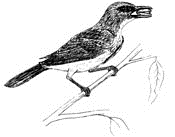Vertebrate Pest Conference: Proceedings

Vertebrate Pest Conference Proceedings: 17th (1996)
Date of this Version
1996
Document Type
Article
Citation
Published in Proceedings: Seventeenth Vertebrate Pest Conference … 1996, ed. Robert M. Timm & A. Charles Crabb (University of California, Davis, 1996).
Abstract
Plague is an endemic disease among field rodents in the southwestern United States. Epizootic outbreaks of this disease increase the risk of human infection where man comes into contact with infected rodents or their fleas. The risk is further increased when colonial rodents are involved, since these animals are usually found in large numbers and are often found in locations where people live, work, or enjoy recreational activities. Elimination of large numbers of susceptible rodents from a particular location following a plague epizootic usually results in a quiescent period when plague is neither a threat to those rodents moving into the former colony confines or a threat to people using the same geographic area. In areas where the human health threat following an epizootic is unacceptable, susceptible rodents and their fleas may be eliminated through trapping or poisoning the animals and dusting the burrows with insecticide to kill the fleas. In recent years, however, the health (or death) of prairie dogs (Cynomys spp.) or California ground squirrels (Spermophilus beecheyi) has become a significant ecological issue in areas where these rodents are the predominant prey base for endangered species of animals. Prairie dogs often support populations of endangered raptors while California ground squirrels may support the endangered San Joaquin kit fox (Vulpes macrotis mutica). In some areas of central California, where the kit foxes are supported by ground squirrels, reduction in the number of rodents to reduce the threat of plague is prohibited. Confounding the management of plague, limitations may be placed on the types of insecticides used for flea control following an epizootic. When insecticide use is permitted, preventive flea control to protect rodents from plague results in a continuous, sustainable population of highly plague susceptible rodents. When flea suppression fails, replacement animals can be trapped and relocated to areas decimated by plague. Not only are these types of plague management expensive in terms of manpower, equipment and time, but the potential of epizootic plague is constantly present.
Included in
Animal Sciences Commons, Bioresource and Agricultural Engineering Commons, Environmental Engineering Commons


Comments
Copyright © 1996 (where applicable) by the Vertebrate Pest Council of the Vertebrate Pest Conference. Used by permission.